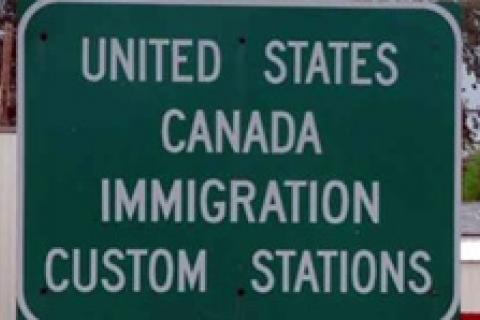
I live in Ontario, Canada, but I do a fair bit of hunting in the U.S. Similarly, Canada is a very popular destination for many American hunters, along with Mexico. Over the years I've learned a few things about making these border crossings as quick and easy as possible, whether travelling by air or vehicle.
- Most importantly, always remain calm, polite and courteous. Border agents have tough, thankless jobs. Losing your cool and giving the border agent attitude will only make things worse for you. Be aware, however, that some agents are not very familiar with firearms or hunting or may even be opposed to such things, so be patient and understanding.
- Have all of your paperwork in order and ready to hand over when you reach the booth. Research in advance exactly what firearms import permits/declarations are required and obtain them. At the booth, hand over these documents BEFORE being asked. This shows that you have nothing to hide. When travelling with a group, don't try to include multiple hunters' firearms on a single firearms declaration form in order to avoid paying multiple fees. Border agents are on the lookout for this trick and, if you are caught, they may then assume that you are trying to violate other rules as well. You could find your vehicle, and yourself, subject to a thorough search, all for the sake of trying to save an insignificant amount of money. Same goes for other items you may be taking with you or bringing home; always declare everything!
- All firearms should be properly encased and readily accessible for inspection, AND UNLOADED. This may seem obvious, but I know of people who have transported muzzleloaders across the border with a powder charge and bullet down the barrel. Although a muzzleloader is not considered legally "loaded" in most jurisdictions unless there is a cap or primer in place behind the powder charge, that may be of little assistance if a border agent asks you to prove that your muzzleloader isn't loaded.
- If flying, know the rules of each airline you will be flying with regard to traveling with firearms and ammunition, as they do vary. For instance, some require ammo to be carried in a locked ammo box separate from your firearm, while others require it to be transported in your gun case. Never carry loose rounds of ammo and, in fact, most airlines want the ammo packaged in its original box, too. Print the rules off the airlines' websites and have them handy to POLITELY show the airline agent if they seem unsure of the rules. If you're a muzzleloader, be aware that you can't fly with powder, so you will need to make arrangements to have some available at your destination.
- Due largely to concerns about Chronic Wasting Disease, most jurisdictions now have strict rules about bringing back big game animal parts from other locales, or even just transporting them through these jurisdictions. Research this in advance, check the airlines' rules, and have printouts handy. I make sure that all meat is deboned and butchered, properly wrapped, frozen and labeled, and sealed (taped shut) in a leak-proof cooler with my name and licence number clearly and indelibly written on the outside. Make sure the hide/cape is properly scraped and either frozen or salted, and any skull/skull plates have been thoroughly cleaned of all brain and other tissue (boil or sprinkle with Borax, if possible), and are similarly sealed in a leak-proof container with your name and licence number on the outside. I've found that wrapping/taping the skull plate of a deer rack so that only the antlers (cleaned of all blood) are visible makes it less likely to be inspected. Border agents may not be familiar with all the rules, so explaining what you have done to make sure that things are all in order will show that you have taken the time to learn the requirements and are not a risk to be transporting something illegally.
Good hunting.
- 3395 views

